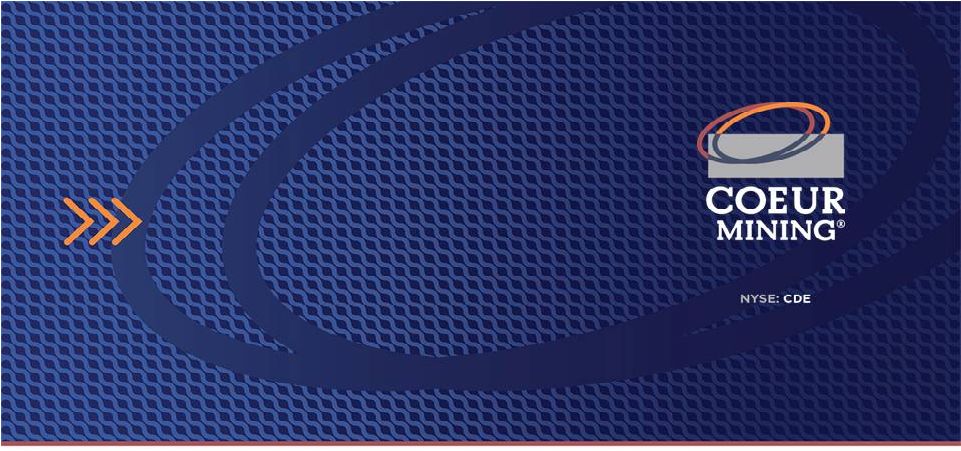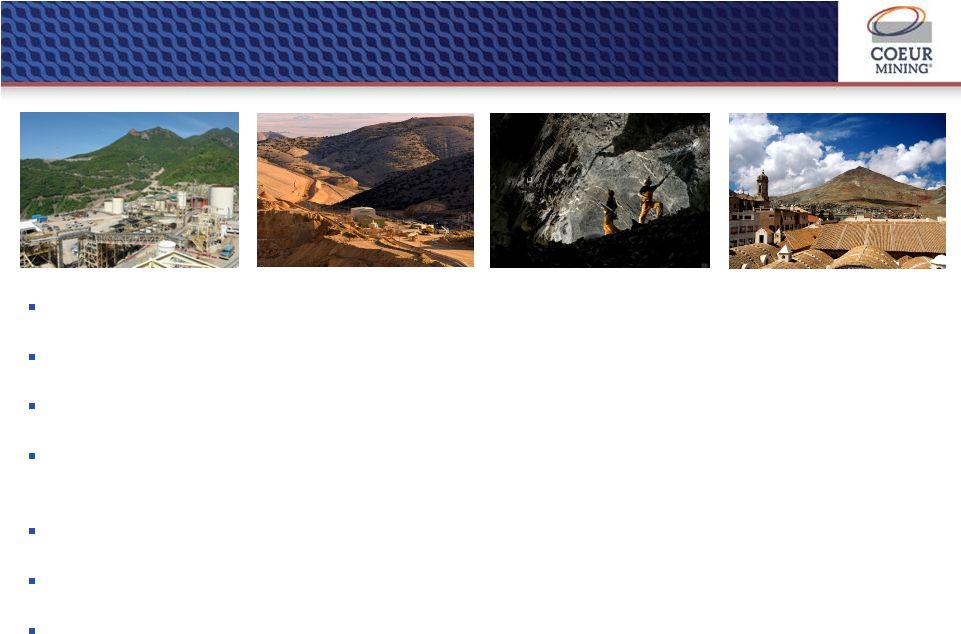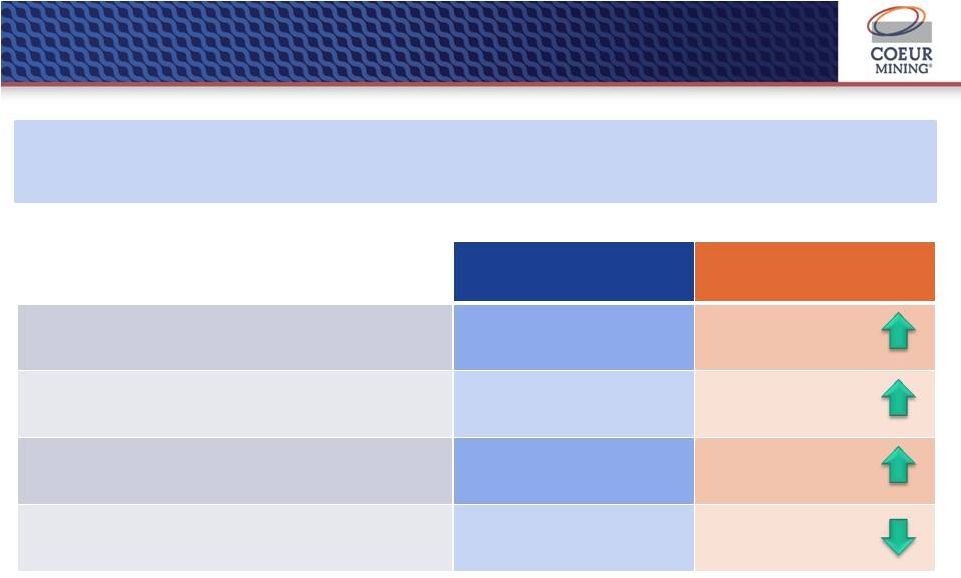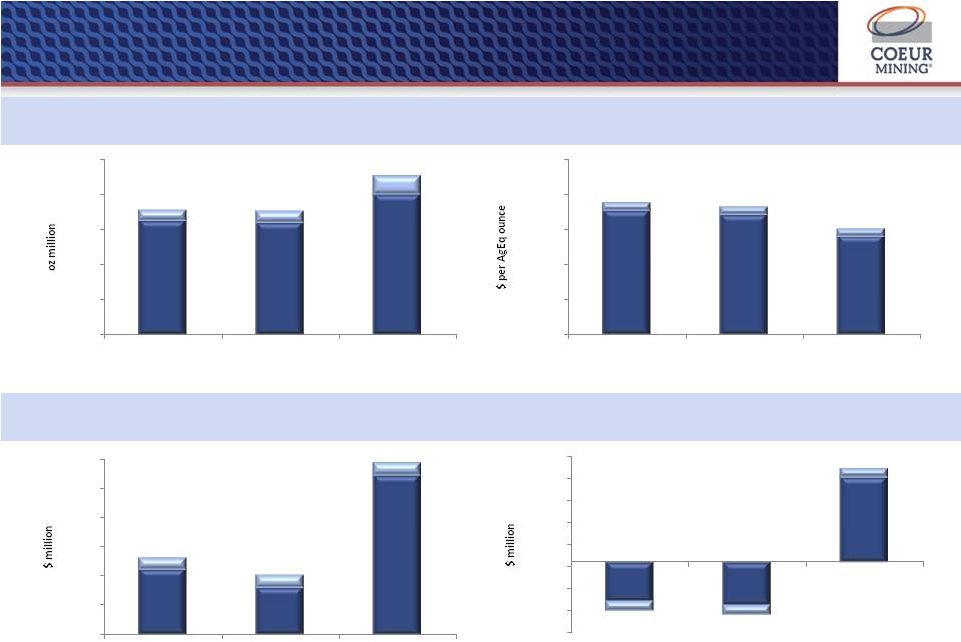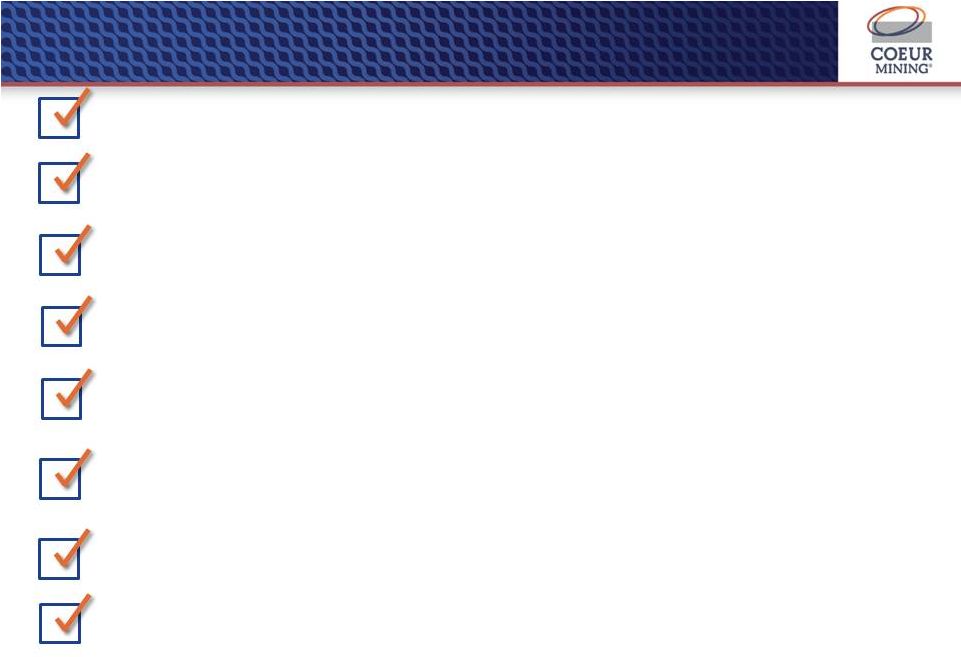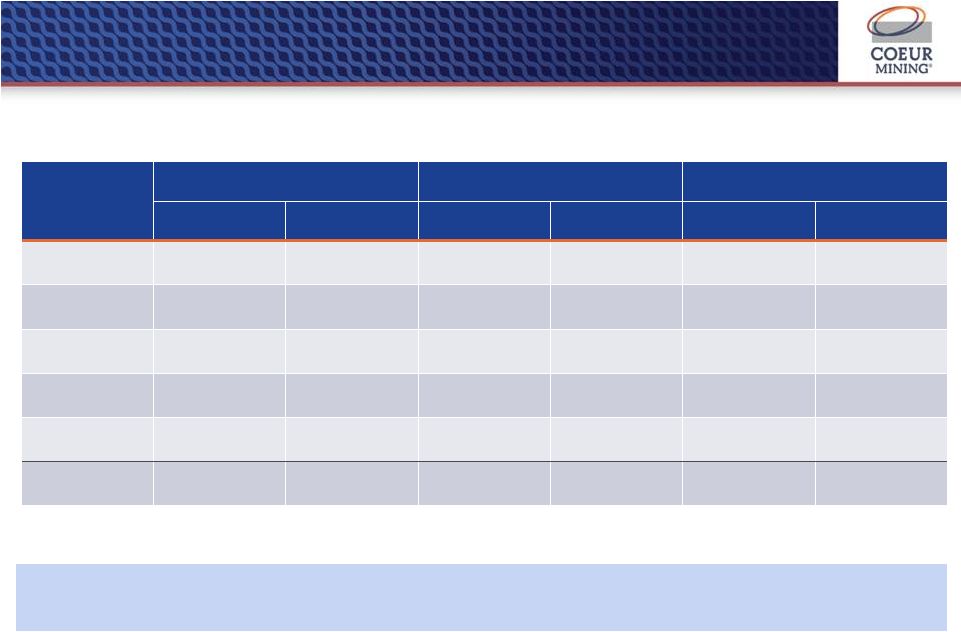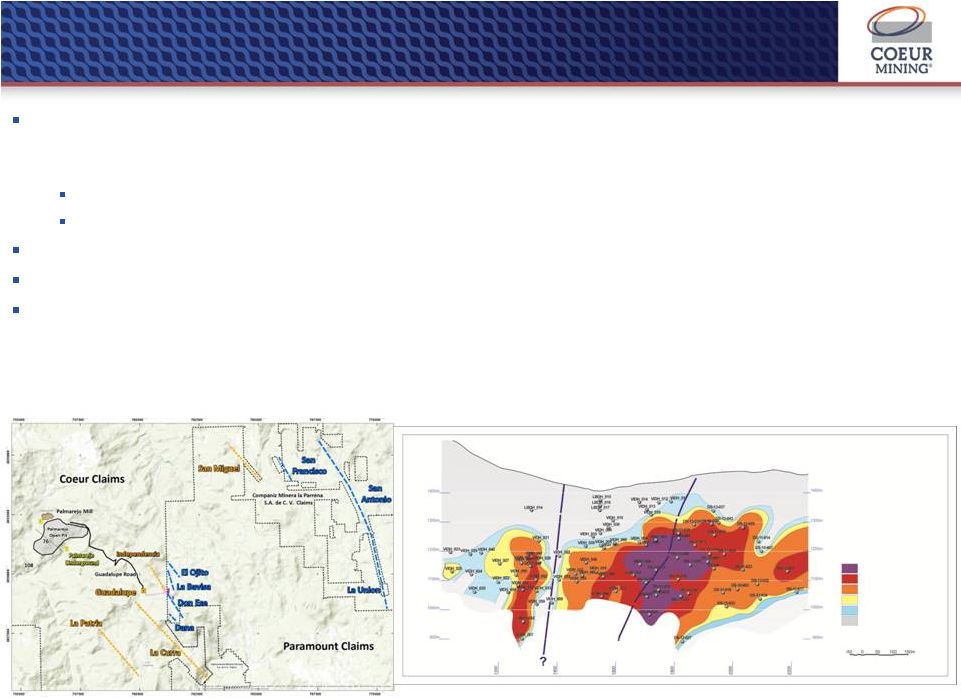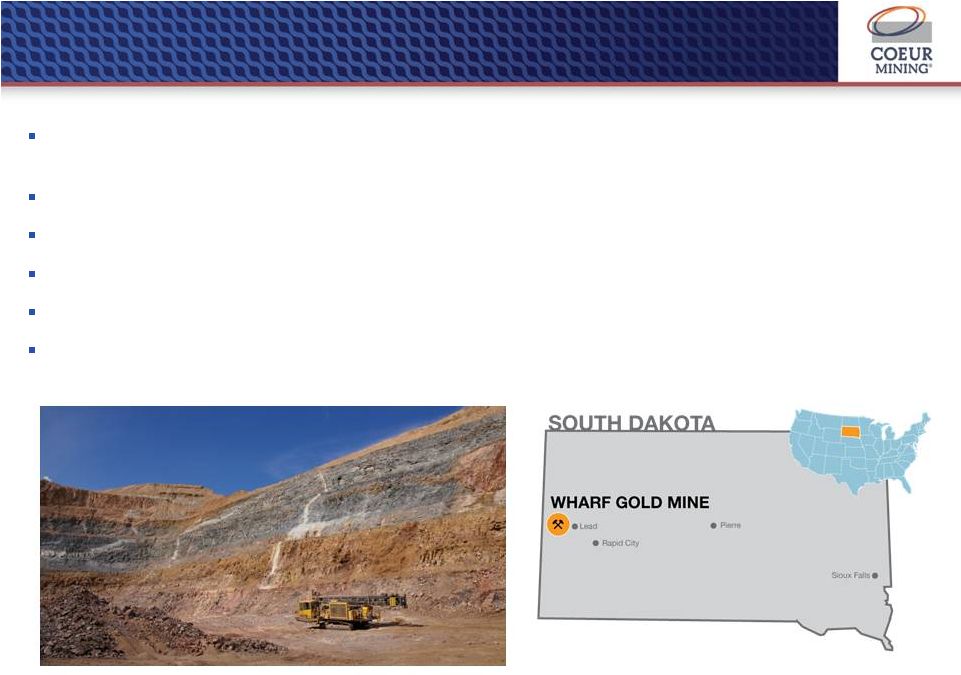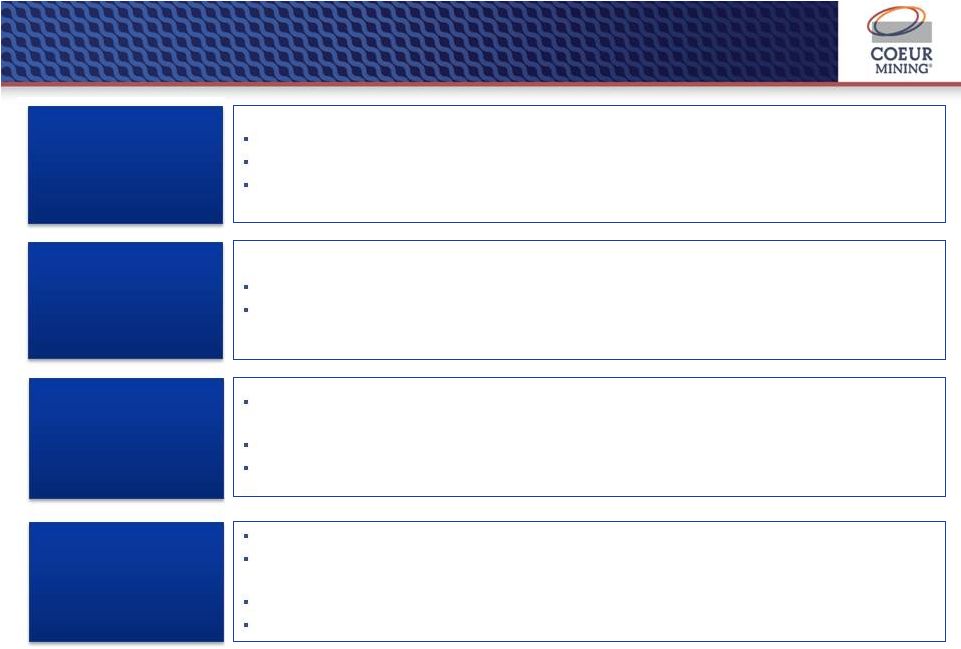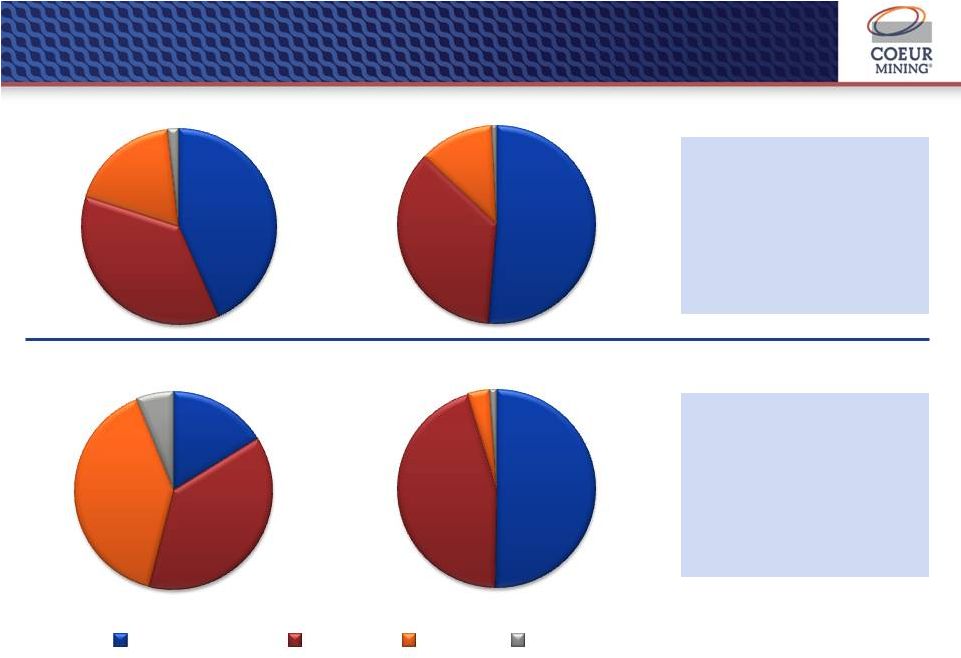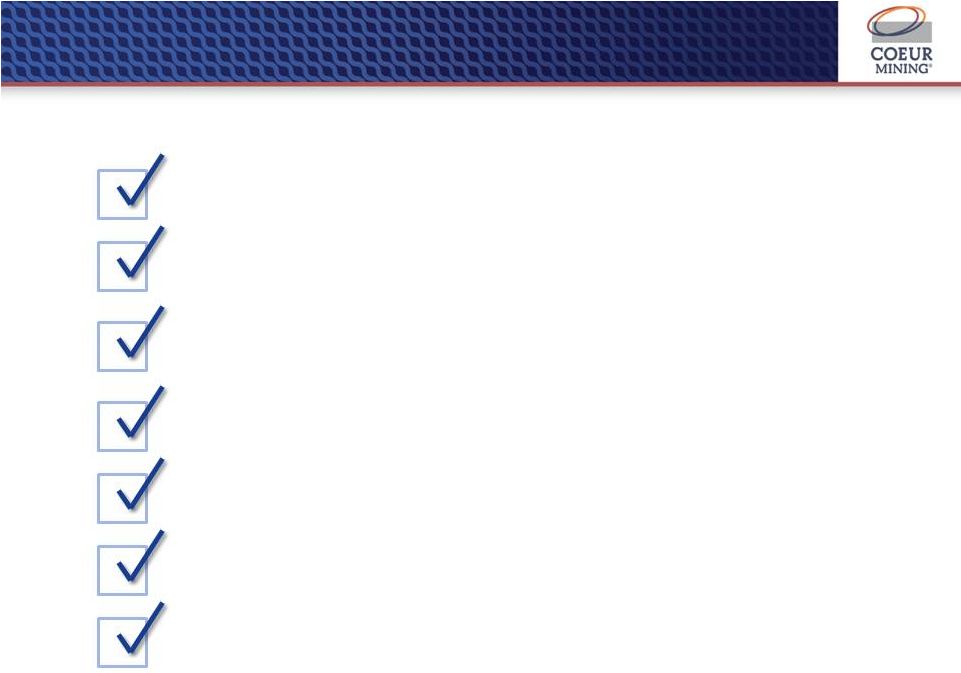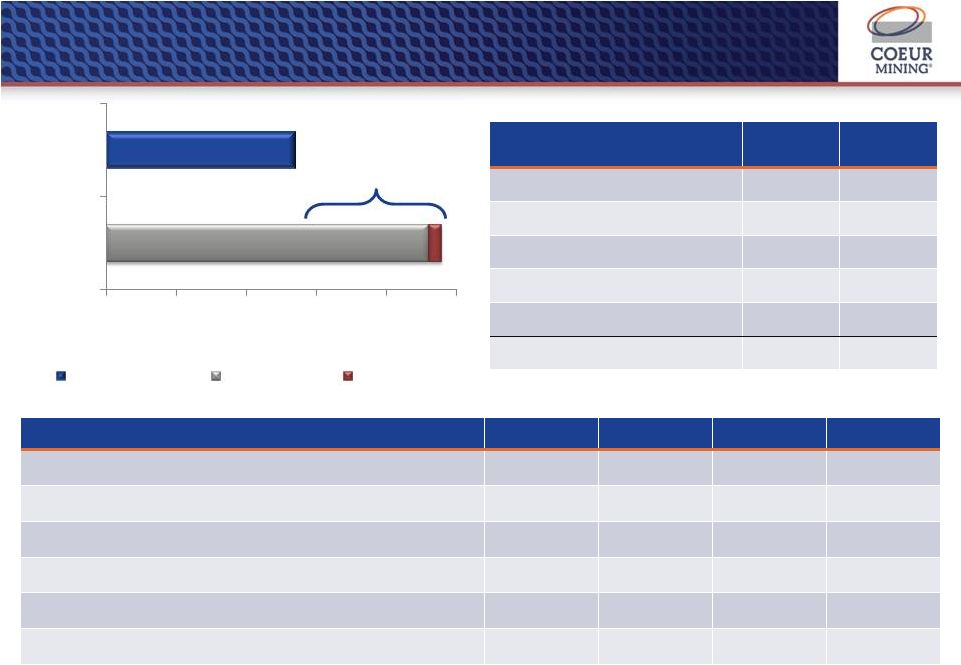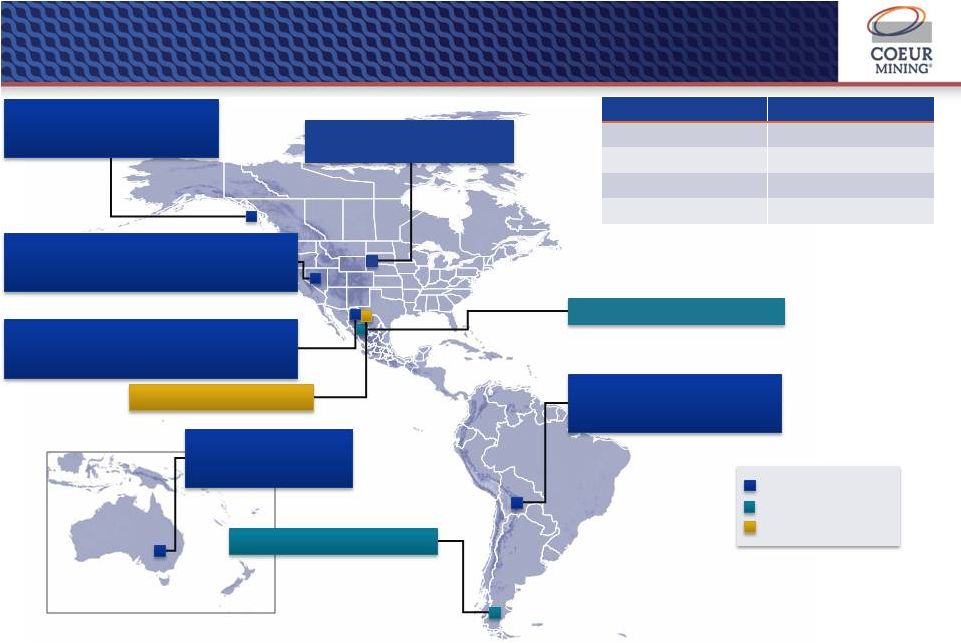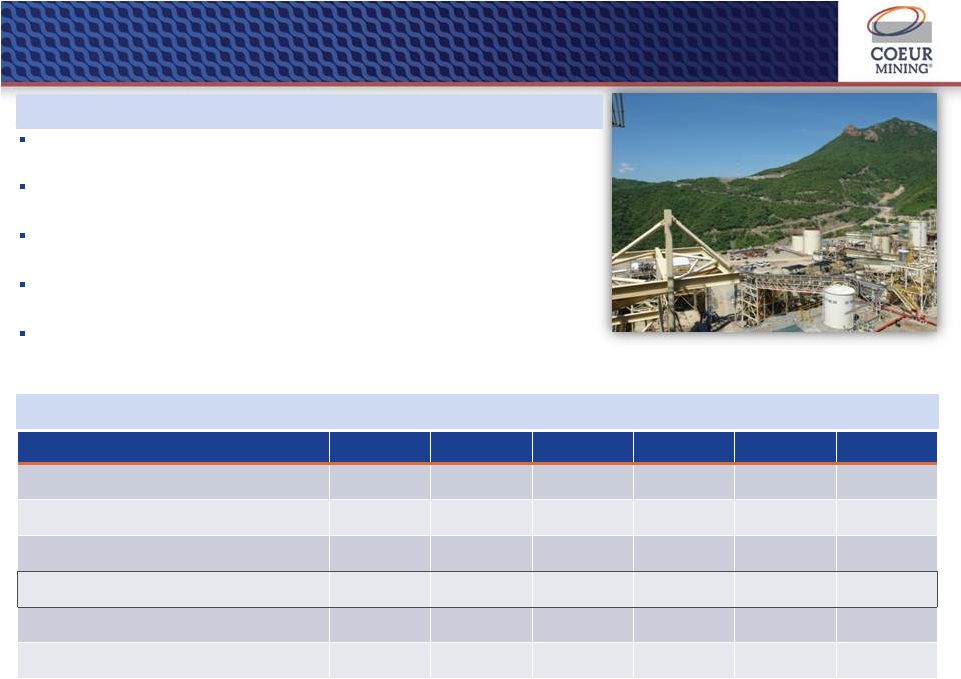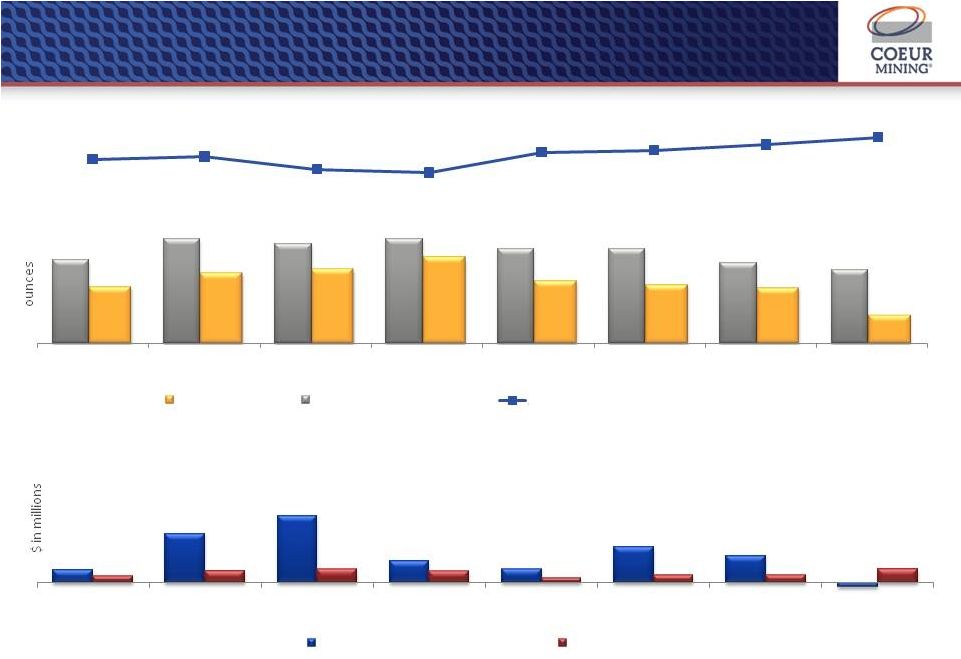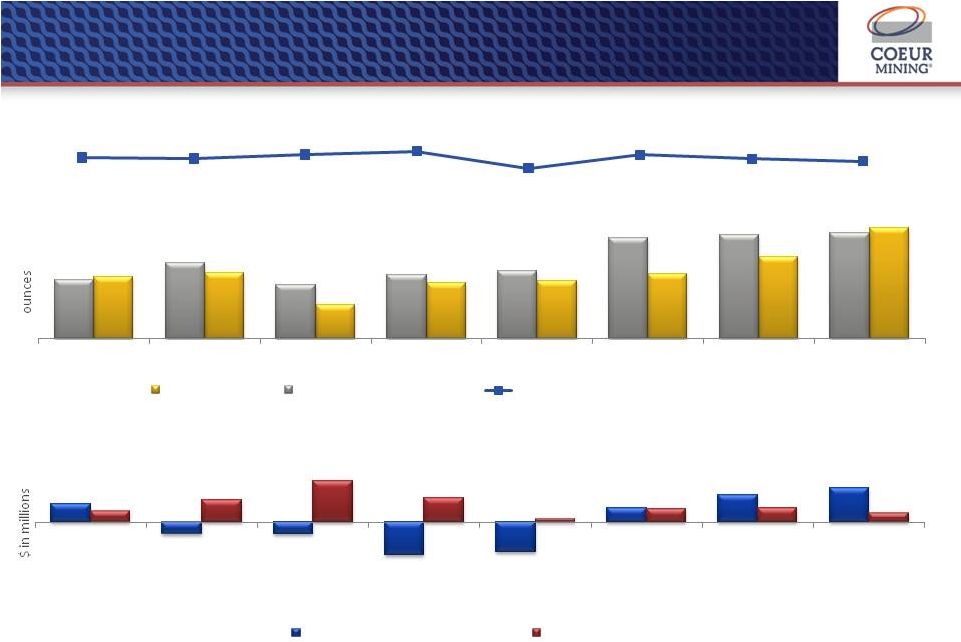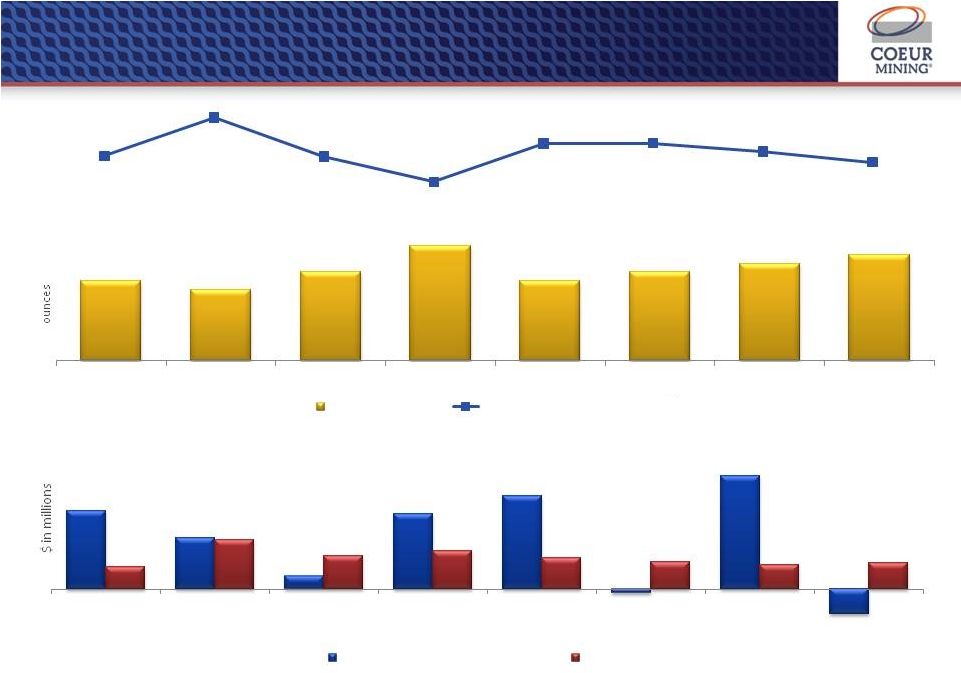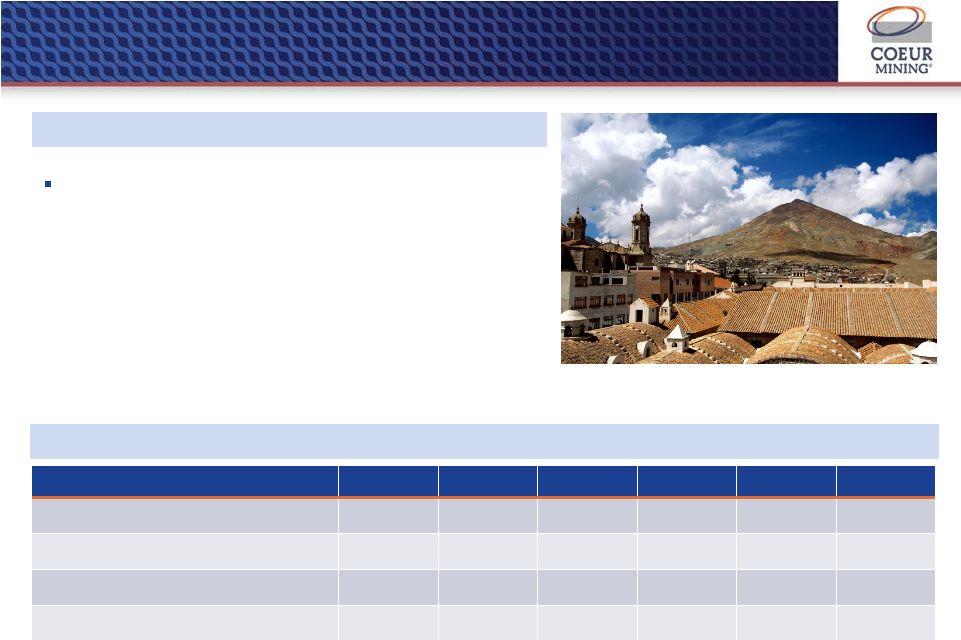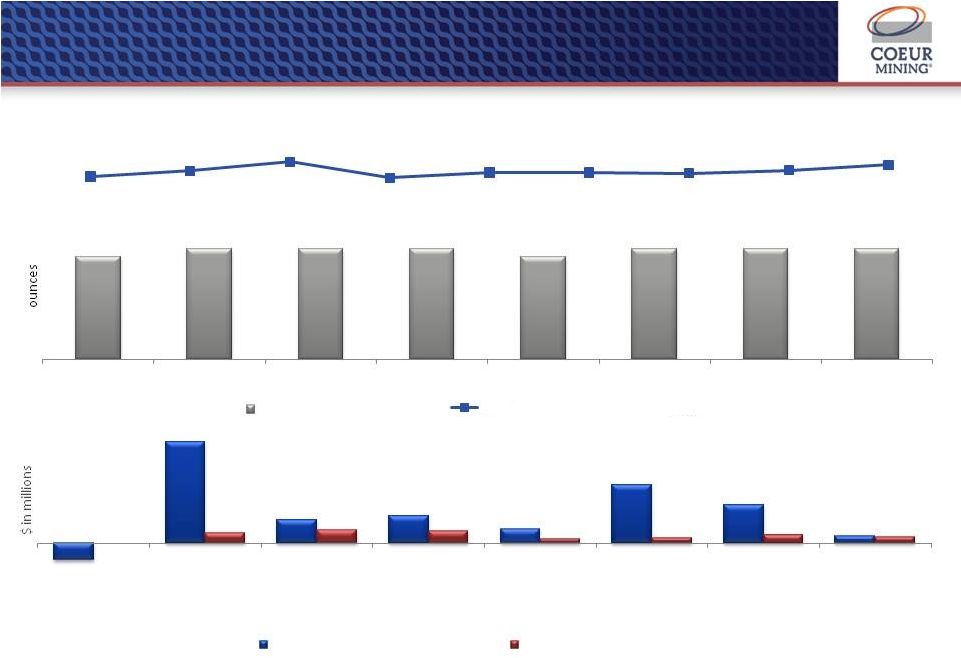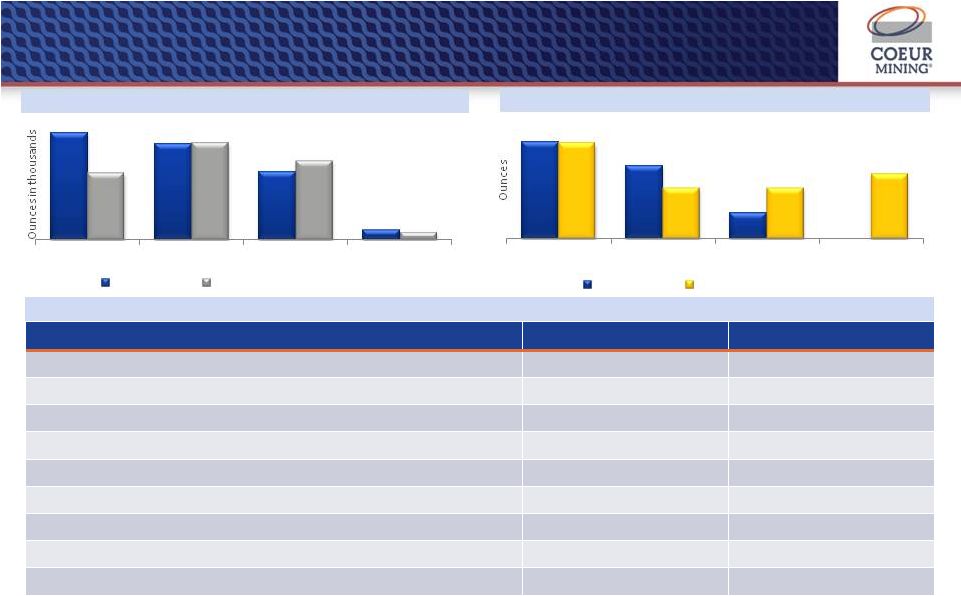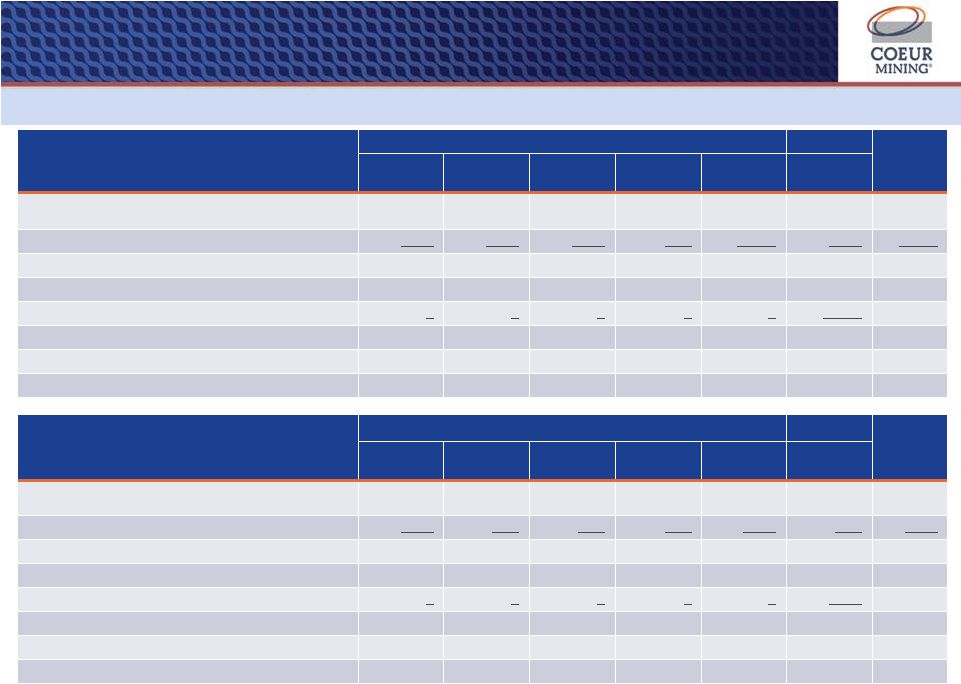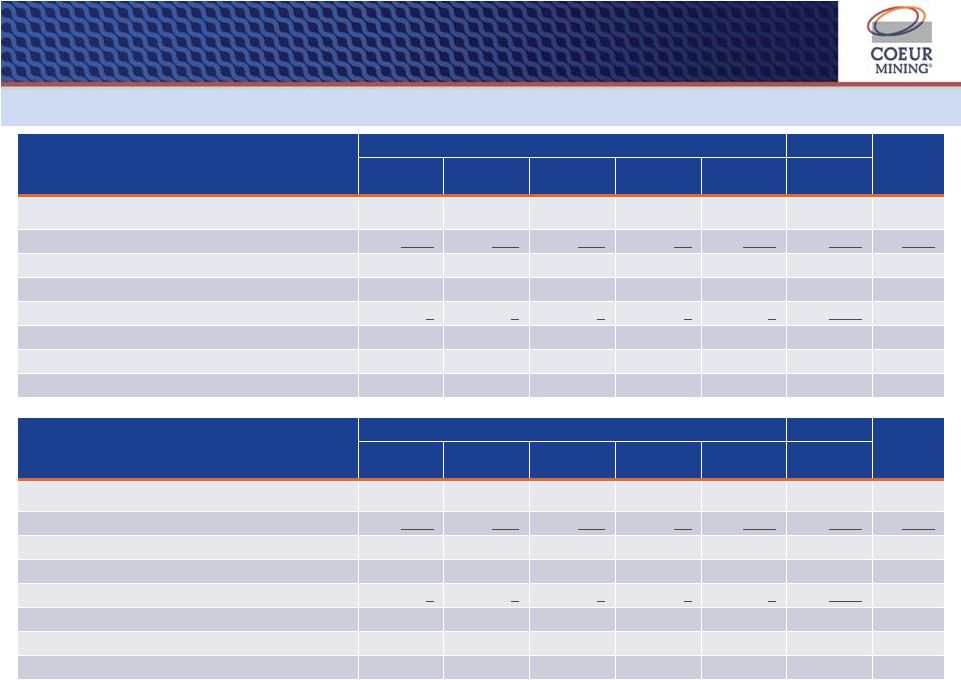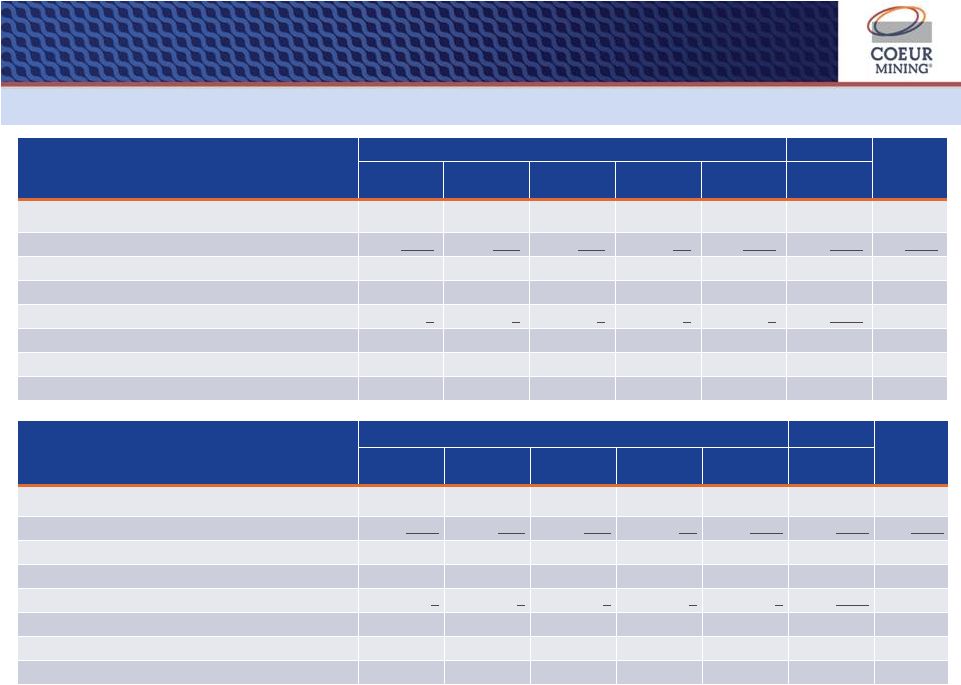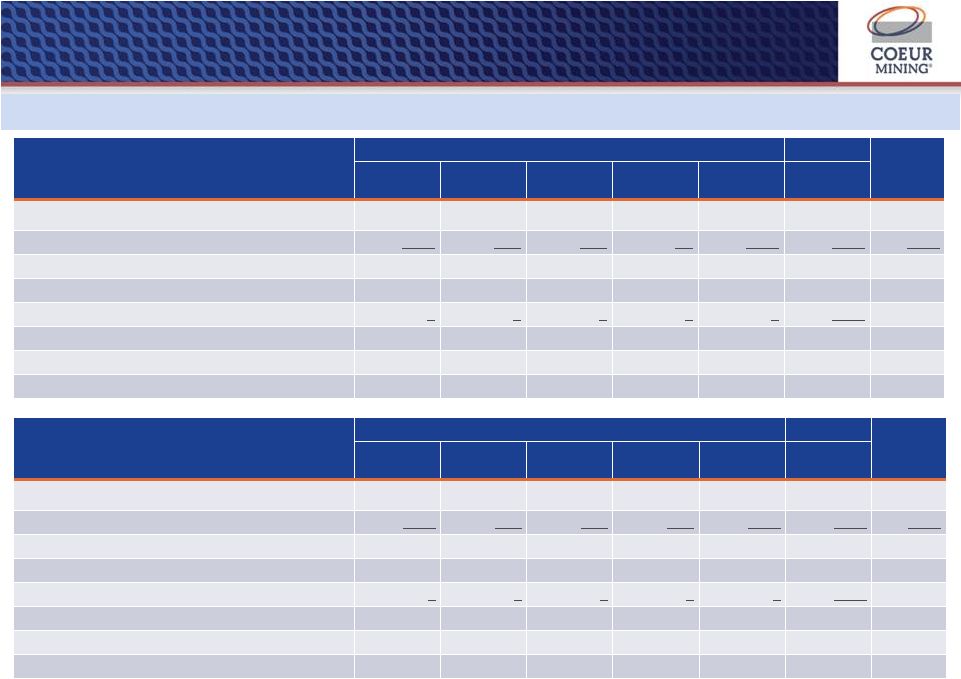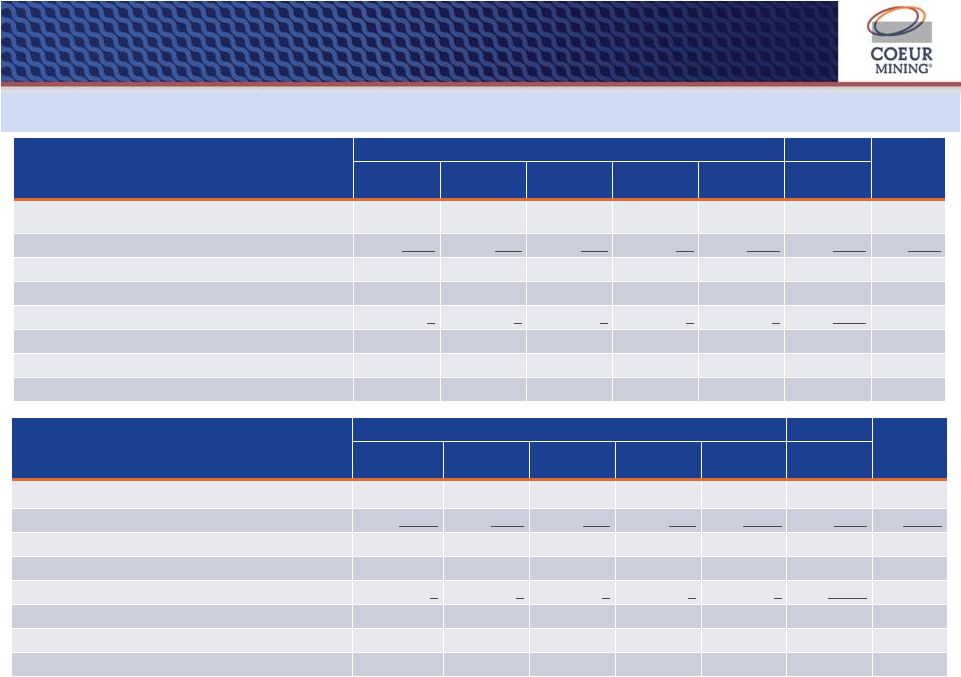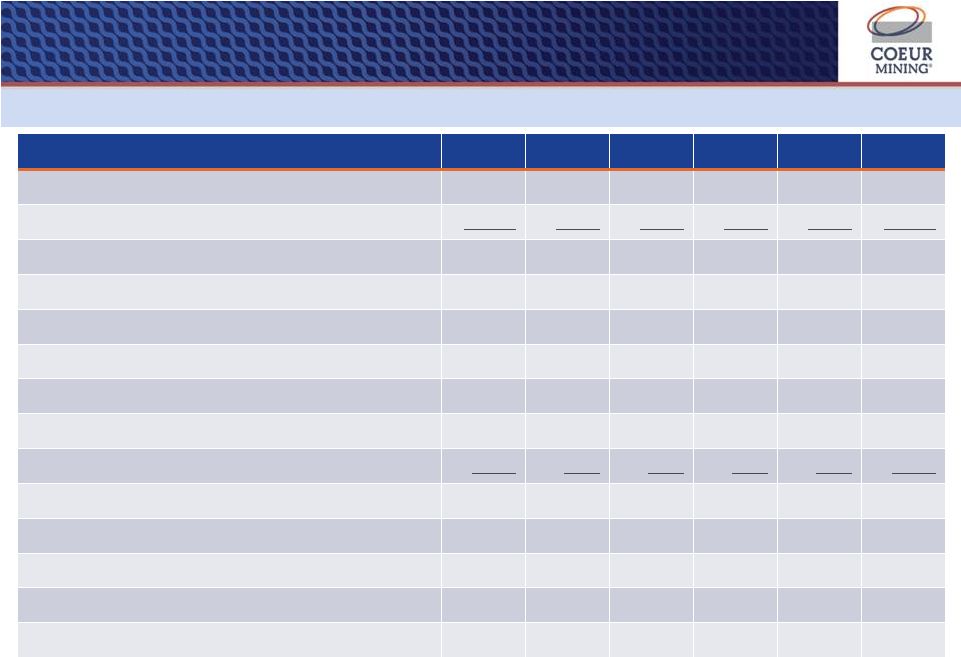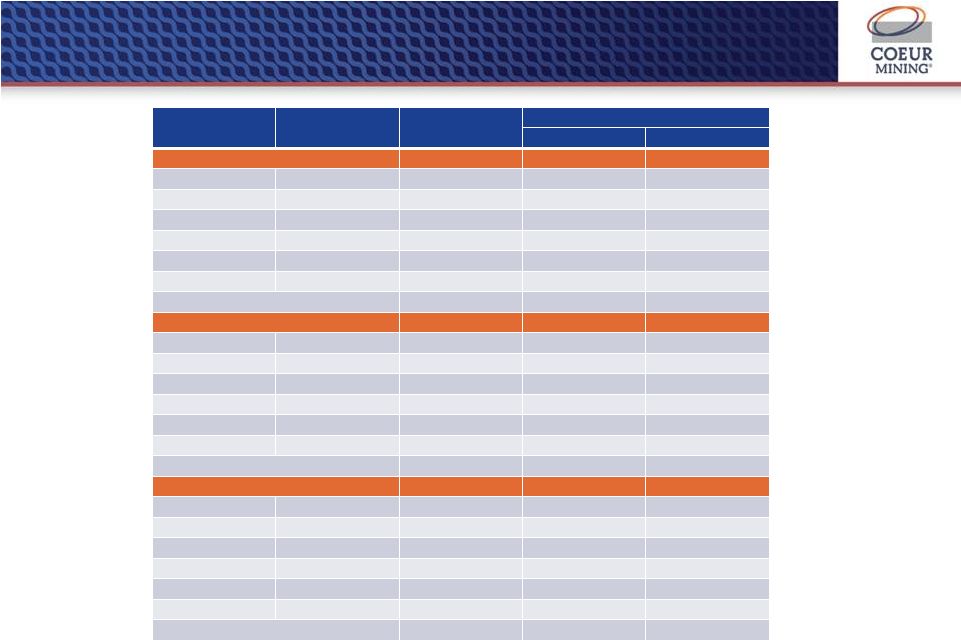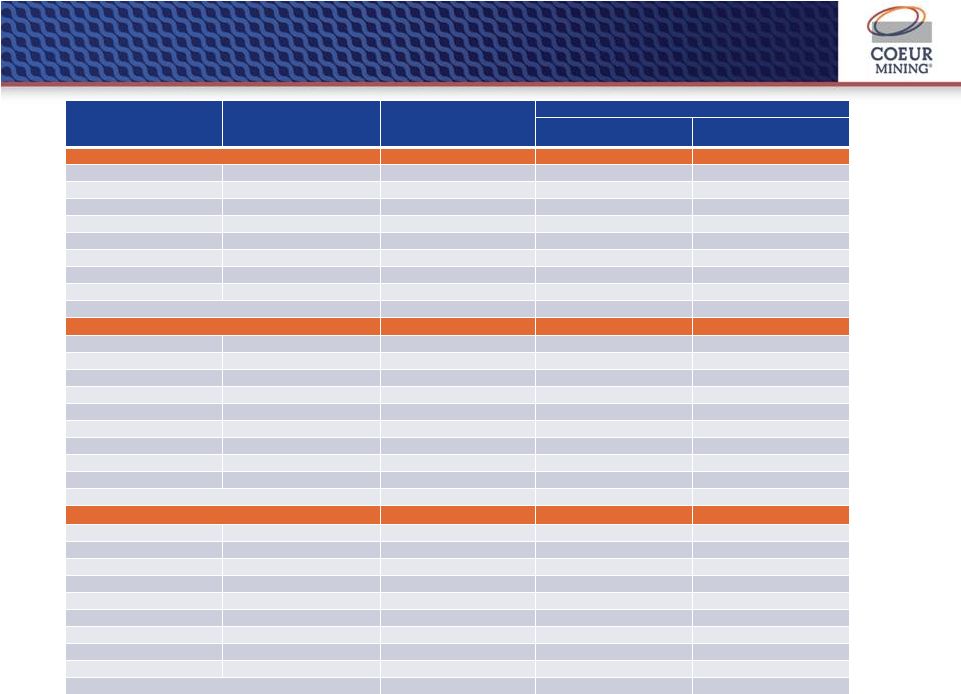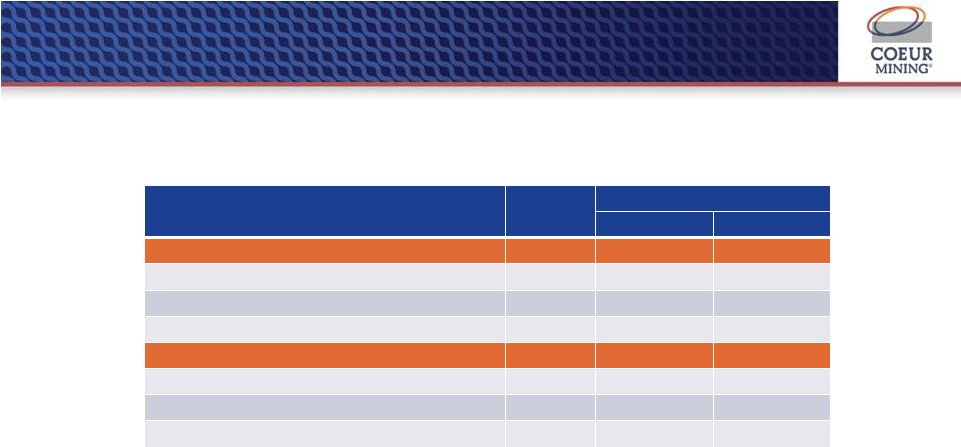2 NYSE: CDE Cautionary Statements This presentation contains forward-looking statements within the meaning of securities legislation in the United States and Canada, including statements regarding anticipated high-return organic and external growth opportunities, free cash flow, cash conservation, the capacity expansion projects at Rochester, permitting, production, costs, crushing rates, recoveries, grades, margins, cash flow, throughput, the new mine plan at Kensington, the anticipated benefits of the Wharf acquisition, the transaction closing of Paramount Gold and Silver Corp, capital and exploration expenditures, Guadalupe underground mining rates, POA 10 approval at Rochester, open-pit and underground mining operations at Palmarejo, anticipated royalty payments, development of the Jualin deposit at the Kensington mine, and initiatives to achieve higher-grade production, efficiencies, lower costs, and balance sheet liquidity. Such forward-looking statements involve known and unknown risks, uncertainties and other factors which may cause Coeur's actual results, performance or achievements to be materially different from any future results, performance or achievements expressed or implied by the forward-looking statements. Such factors include, among others, the risks and hazards inherent in the mining business (including risks inherent in developing large-scale mining projects, environmental hazards, industrial accidents, weather or geologically related conditions), changes in the market prices of gold and silver and a sustained lower price environment, the uncertainties inherent in Coeur's production, exploratory and developmental activities, including risks relating to permitting and regulatory delays, ground conditions, grade variability, any future labor disputes or work stoppages, the uncertainties inherent in the estimation of gold and silver ore reserves, changes that could result from Coeur's future acquisition of new mining properties or businesses, reliance on third parties to operate certain mines where Coeur owns silver production and reserves and the absence of control over mining operations in which Coeur or its subsidiaries hold royalty or streaming interests and risks related to these mining operations including results of mining and exploration activities, environmental, economic and political risks of the jurisdiction in which the mining operations are located, the loss of any third-party smelter to which Coeur markets silver and gold, the effects of environmental and other governmental regulations, the risks inherent in the ownership or operation of or investment in mining properties or businesses in foreign countries, Coeur's ability to raise additional financing necessary to conduct its business, make payments or refinance its debt, as well as other uncertainties and risk factors set out in filings made from time to time with the United States Securities and Exchange Commission, and the Canadian securities regulators, including, without limitation, Coeur's most recent reports on Form 10-K and Form 10-Q. Actual results, developments and timetables could vary significantly from the estimates presented. Readers are cautioned not to put undue reliance on forward-looking statements. Coeur disclaims any intent or obligation to update publicly such forward-looking statements, whether as a result of new information, future events or otherwise. Additionally, Coeur undertakes no obligation to comment on analyses, expectations or statements made by third parties in respect of Coeur, its financial or operating results or its securities. Coeur Mining, Inc. is subject to the reporting requirements of the Exchange Act and applicable Canadian securities laws, and as a result we report our mineral reserves according to two different standards. Canadian reporting requirements for disclosure of mineral properties are governed by National Instrument 43-101 Standards of Disclosure for Mineral Projects (“NI 43-101”). The definitions of NI 43-101 are adopted from those given by the Canadian Institute of Mining, Metallurgy and Petroleum. U.S. reporting requirements, however, are governed by the SEC’s Industry Guide 7 (as interpreted by the SEC, “Guide 7”). Both sets of reporting standards have similar goals in terms of conveying an appropriate level of confidence in the disclosures being reported, but embody different approaches and definitions. Under Guide 7, mineralization may not be classified as a “reserve” unless the determination has been made that the mineralization could be economically and legally produced or extracted at the time the reserve determination is made. In our public filings in Canada and in certain other announcements not filed with the SEC, we disclose measured, indicated and inferred resources, each as defined in NI 43-101, in addition to our mineral reserves. U.S. investors are cautioned that, while the terms “measured mineral resources,” “indicated mineral resources” and “inferred mineral resources” are recognized and required by Canadian securities laws, Guide 7 does not recognize them. The estimation of measured resources and indicated resources involve greater uncertainty as to their existence and economic feasibility than the estimation of proven and probable reserves, and therefore U.S. investors are cautioned not to assume that all or any part of measured or indicated resources will ever be converted into Guide 7 compliant reserves. In this presentation, we modify our estimates made in compliance with NI 43-101 to conform to Guide 7 for reporting in the United States. In this presentation, we use the term “mineralized material” to describe mineralization in mineral deposits that do not constitute “reserves” under U.S. standards. “Mineralized material” is substantially equivalent to measured and indicated mineral resources (exclusive of reserves) as disclosed for reporting purposes in Canada, except that the SEC only permits issuers to report "mineralized material" in tonnage and average grade without reference to contained ounces. We provide disclosure of mineralized material to allow a means of comparing our projects to those of other companies in the mining industry, many of which are Canadian and report pursuant to NI 43-101, and to comply with applicable disclosure requirements. We caution you not to assume that all or any part of mineralized material will ever be converted into Guide 7 compliant reserves. | 